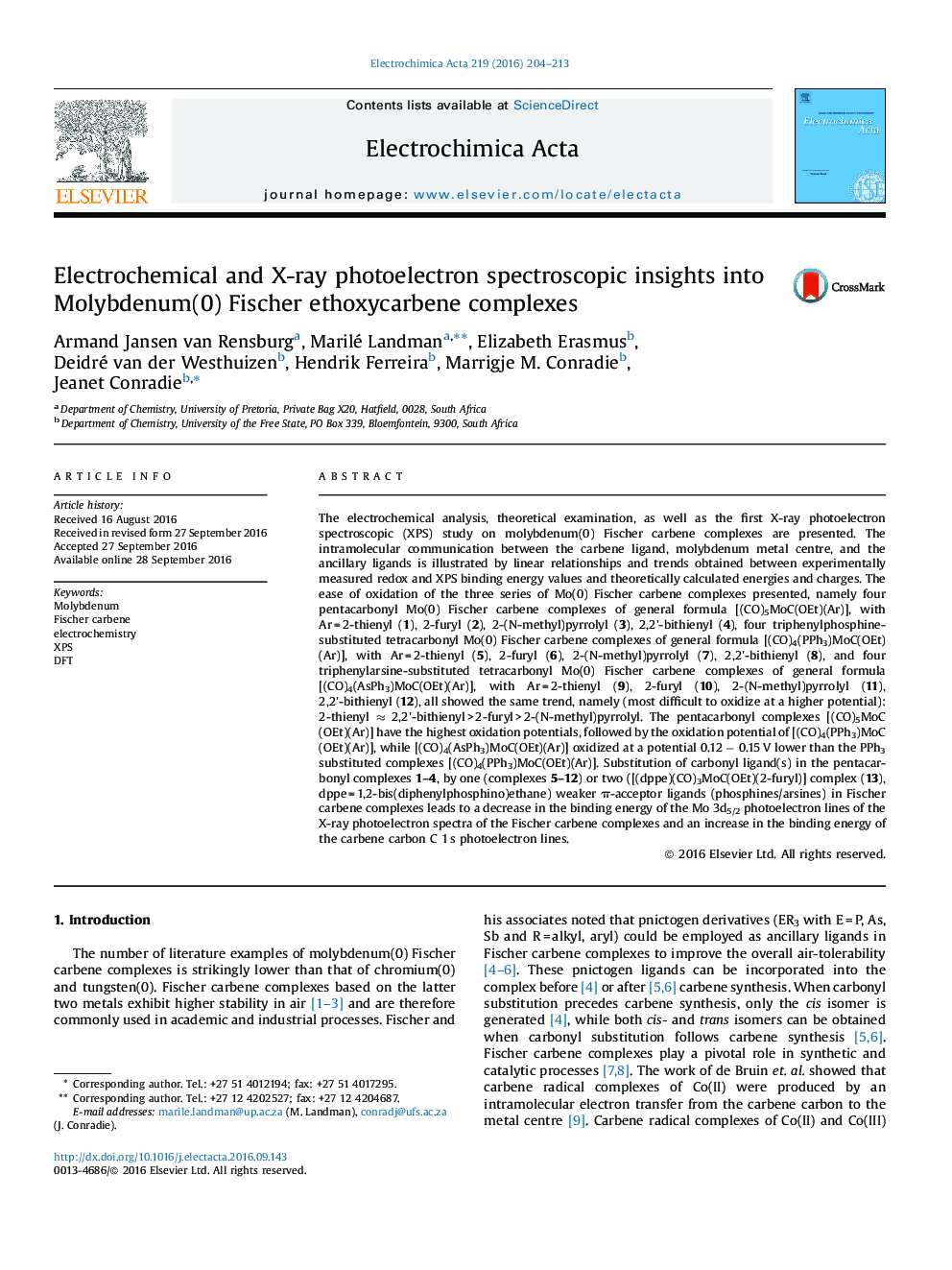| Article ID | Journal | Published Year | Pages | File Type |
|---|---|---|---|---|
| 6472887 | Electrochimica Acta | 2016 | 10 Pages |
The electrochemical analysis, theoretical examination, as well as the first X-ray photoelectron spectroscopic (XPS) study on molybdenum(0) Fischer carbene complexes are presented. The intramolecular communication between the carbene ligand, molybdenum metal centre, and the ancillary ligands is illustrated by linear relationships and trends obtained between experimentally measured redox and XPS binding energy values and theoretically calculated energies and charges. The ease of oxidation of the three series of Mo(0) Fischer carbene complexes presented, namely four pentacarbonyl Mo(0) Fischer carbene complexes of general formula [(CO)5MoC(OEt)(Ar)], with Ar = 2-thienyl (1), 2-furyl (2), 2-(N-methyl)pyrrolyl (3), 2,2'-bithienyl (4), four triphenylphosphine-substituted tetracarbonyl Mo(0) Fischer carbene complexes of general formula [(CO)4(PPh3)MoC(OEt)(Ar)], with Ar = 2-thienyl (5), 2-furyl (6), 2-(N-methyl)pyrrolyl (7), 2,2'-bithienyl (8), and four triphenylarsine-substituted tetracarbonyl Mo(0) Fischer carbene complexes of general formula [(CO)4(AsPh3)MoC(OEt)(Ar)], with Ar = 2-thienyl (9), 2-furyl (10), 2-(N-methyl)pyrrolyl (11), 2,2'-bithienyl (12), all showed the same trend, namely (most difficult to oxidize at a higher potential): 2-thienyl â 2,2'-bithienyl > 2-furyl > 2-(N-methyl)pyrrolyl. The pentacarbonyl complexes [(CO)5MoC(OEt)(Ar)] have the highest oxidation potentials, followed by the oxidation potential of [(CO)4(PPh3)MoC(OEt)(Ar)], while [(CO)4(AsPh3)MoC(OEt)(Ar)] oxidized at a potential 0.12 â 0.15 V lower than the PPh3 substituted complexes [(CO)4(PPh3)MoC(OEt)(Ar)]. Substitution of carbonyl ligand(s) in the pentacarbonyl complexes 1-4, by one (complexes 5-12) or two ([(dppe)(CO)3MoC(OEt)(2-furyl)] complex (13), dppe = 1,2-bis(diphenylphosphino)ethane) weaker Ï-acceptor ligands (phosphines/arsines) in Fischer carbene complexes leads to a decrease in the binding energy of the Mo 3d5/2 photoelectron lines of the X-ray photoelectron spectra of the Fischer carbene complexes and an increase in the binding energy of the carbene carbon C 1 s photoelectron lines.
Graphical abstractDownload high-res image (129KB)Download full-size image
